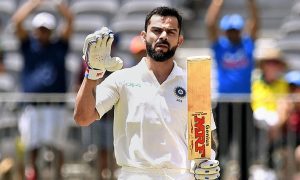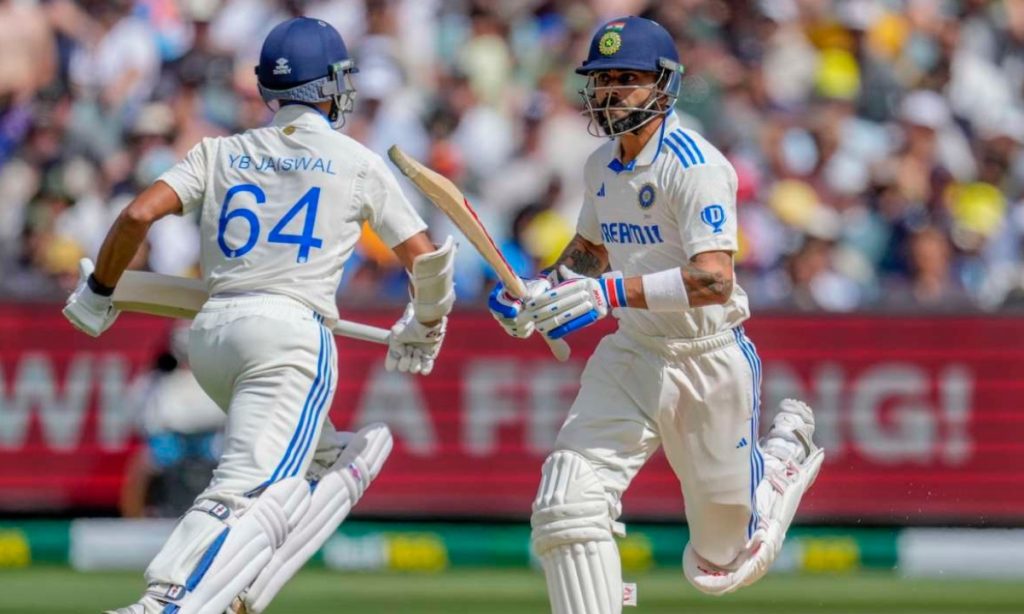Cricket, often described as a game of fine margins, witnessed one such moment during the Boxing Day Test between India and Australia at the Melbourne Cricket Ground, where a promising partnership between Yashasvi Jaiswal and Virat Kohli unraveled due to a mix-up. With Virat Jaiswal and Virat Kohli in formidable touch, having stitched together a crucial 102-run stand, the runout of Jaiswal for 82 was a pivotal moment that shifted the game’s momentum. This article unpacks the sequence of events leading to Jaiswal’s dismissal and the subsequent collapse of the Indian innings, focusing on why Kohli’s actions might have been the catalyst for this unfortunate turn of events.
The Build-Up to the Runout
On day two of the Boxing Day Test, India found themselves in a promising position. Jaiswal, showcasing his talent with an elegant 82, and Virat Kohli, with a composed 36, were laying the groundwork for a substantial response to Australia’s first innings score of 474. The partnership was not just about the runs scored but the manner in which they were accumulated, with both players adeptly handling the Australian bowling attack.

The incident occurred on the last ball of the 41st over, bowled by Scott Boland. Jaiswal, facing a full delivery, drove it crisply towards mid-on and immediately set off for a run, relying on the speed of his running and perhaps expecting Kohli to follow suit. Here, the dynamics of cricket’s unwritten communication between partners came into play, where a split-second decision could make or break an innings.
The Moment of Dismissal
Jaiswal’s decision to run was instantaneous, but Kohli, after taking a few steps, turned his back to watch the ball, signaling either hesitation or a decision that the run was not there. This moment of indecision or miscommunication is where the fingers point towards Kohli. In cricket, the non-striker’s role in a run-out scenario is crucial, as they must judge whether to commit to the run or alert their partner to retreat. Kohli’s action, or lack thereof, meant Jaiswal was left in no-man’s land.
Pat Cummins, fielding at mid-on, took his time with the ball, giving Alex Carey enough time to collect it and break the stumps with Jaiswal stranded. The runout was not just a loss of Jaiswal’s wicket but also a morale dampener, as he was in sublime form and on course for what could have been a match-defining century.
Virat Kohli’s Role in the Dismissal
The blame on Virat Kohli stems from several aspects:
Decision Making: Kohli, with his experience, should have either committed to the run or vocally or physically indicated to Jaiswal to return. His hesitation left Jaiswal with no clear signal, which in the fast-paced environment of a cricket match, can lead to such dismissals.
Leadership on the Field: As one of the senior players and a former captain, Kohli’s role extends beyond just playing; it includes guiding younger players like Jaiswal. His body language suggested he was watching the ball rather than his partner, which is often seen as a lapse in on-field leadership.
Previous Incidents: Virat Kohli has been involved in similar mix-ups in the past where his actions or inactions have led to runouts. While this doesn’t justify the incident, it adds to the narrative that perhaps his concentration or commitment to run calls needs scrutiny.
After Jaiswal’s dismissal, the momentum shifted dramatically. India went from 153/2 to 164/5 by the end of the day’s play, with Kohli himself getting out edged to Alex Carey in the subsequent over, scoring only 36. This loss of wickets and the trail of 310 runs by stumps on day two underscored how crucial that runout was for the match’s trajectory.
Analysis
Cricket fans and analysts dissected the runout, with opinions divided. Some argued that Jaiswal should have checked with Kohli before committing, while others felt that Kohli’s initial steps suggested he was initially in agreement with the run. However, the consensus leaned towards Kohli’s responsibility in this scenario due to his experience and the expectation of better on-field communication from a player of his caliber.
The incident also sparked discussions about the importance of non-verbal cues in cricket, the role of senior players in mentoring the young, and how such moments can affect team morale and strategy. It highlighted the fragile nature of cricket partnerships where one misstep can lead to a collapse.
While cricket is a team sport where responsibility is shared, the Jaiswal runout during the Boxing Day Test exemplifies how individual actions can significantly impact the game. Kohli’s hesitation or misjudgment in this case was pivotal, leading to a runout that was not just about losing a wicket but also about squandering a potentially game-defining partnership.
The fall of Jaiswal and Kohli in quick succession was a double blow that India struggled to recover from, trailing by 310 runs at the end of day two. This incident serves as a reminder of the importance of clear communication, commitment, and leadership on the field, aspects where Kohli, despite his legendary status, appeared to fall short in this instance. As cricket enthusiasts, we learn from such episodes, hoping for better decision-making and perhaps a redemption story in the innings to follow.

